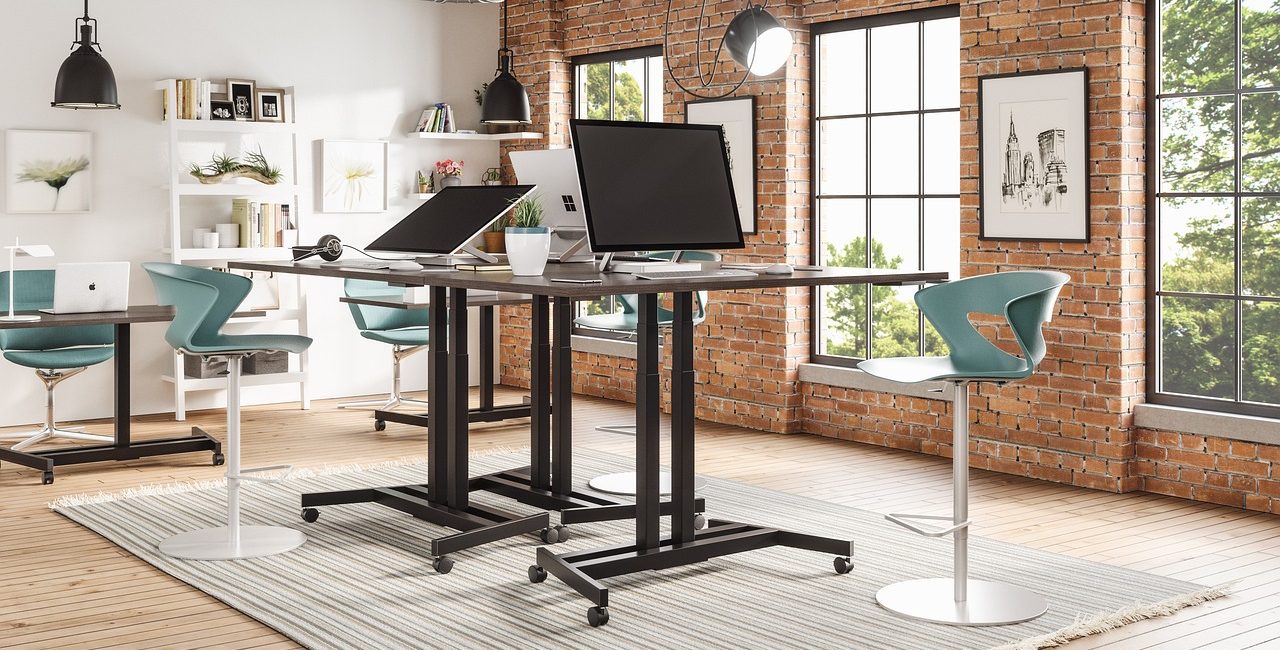
it was reported that around 81% of UK office workers spend between four and nine hours sitting at desks each day, with the office environment having a significant impact on their physical health and productivity. Added to that, Spine Health also attributes prolonged periods of sitting to causing lower back pain or worsening an existing back problem. It’s vital then that we all look for ways to help with back pain at work.
The causes of back pain at work
What causes us to have back pain when we’re working in an office? Well, there are a few contributing factors that can create that ache in your lower back. We’ve listed them below so you can beat that back pain for once and for all:
- Bad posture – The leading cause of back pain for those of us who work in an office, is poor posture. Whether you’re hunched over your laptop for an extended period of time, or fatigue is causing you to slump slightly, this can harm your back.
- Stress and/or anxiety – Our emotions can take a physical toll on our body, and it is not surprising to learn that stress and anxiety can cause our muscles to tense. So this can also contribute to back pain.
- Physical inactivity – Spending hours sitting at your desk can aggravate most muscles in your body, but especially your back. That’s why it’s important to take short breaks and to move around the office as much as you can. This will prevent your back from seizing up.
- Incorrect office chair – Furniture can play a big part in back pain. If you have a chair that is uncomfortable or doesn’t provide enough support, you’re probably going to find that your lower back starts to ache. That’s why picking the perfect office chair is essential.
What is the best office chair for back pain?
When we’re spending hours in sedentary positions, we can’t waste time or put our health at risk by being flippant about what kind of office chairs we should be using.
When looking for an office chair to support your back, neck, posture and to keep you comfortable, these are the things you should be looking for:
- Lumbar support: An ergonomic chair will help support your lower back (lumbar) with designs like flex zones that give constant support – like the Ergohuman task chair.
- Adjustable height: You should be able to adjust your chair to keep you at a good level with your monitor, as well as allowing you to be in a comfortable position for your back.
- Adjustable tension: Many chairs allow you to adjust the tension, by increasing and decreasing it to suit your comfort level, helping to further support your back and posture.
- High backs: Chairs with high back support are great for posture and keeping your body upright. This is so important when confined to sitting at a desk for prolonged periods of time.
- Head and neck support: Having a chair with a height-adjustable, pivotal headrest is also important, as they give full cranial support and help with your overall posture.
- Locked positions: Especially for prolonged sitting, lockable positions are so good for our comfort and posture. A chair that can lock into various positions can help with supporting our lumbars.
- Back tilt: This function is very beneficial for our comfort and backs to ensure we are in good positions for our posture.
The best office chair for back pain should tick off all these boxes. Luckily, you’re in the perfect place to find just the type of office seating that can help with back pain and support, specifically with our range of ergonomic executive office chairs.
How to sit in an office chair to avoid back pain
Now that you’ve found the perfect chair, it’s important to understand how to sit in it. This may seem like an unusual statement, because who doesn’t know how to sit in a chair? But when it comes to avoiding back pain, posture is crucial.
- You should be keeping your chair close to your desk
- Make sure you can adjust the height of your chair to keep your feet on the floor and the top of your monitor at your eye level – your monitor should be at arm’s length
- Your hips should be above your knees
- You should be sat right back in your chair, making sure your whole back is supported
- The backrest should fit the natural curve of your lower back and should be slightly reclined (10 to 15 degrees)
- Shoulders should be relaxed with your elbows at a 90 degrees angle, just above the desk
- Things should be kept in reach at your workstation, with the most used items within range for you to grab them easily. You should avoid leaning across your desk, to maintain effective lumbar support at all times
If you want extra support, there are pillows that can be attached to fit the curve of your back more naturally. It’s important to avoid slouching.
Set up your desk to avoid back pain
Bupa states that you can prevent back pain and other problems by just having a comfortable desk set-up. Other than having a comfortable, good posture promoting chair, what else should your setup have? Is there a way to sit at your desk that avoids back pain?
First things first, make sure that your monitor or laptop is eye level. Monitors are usually adjustable, but for your laptop we recommend investing in a stand to place it on. This means there is no reason for you to hunch over to look at your screen.
Also, make sure that your mouse and keyboard are within arm’s reach. This will prevent unnecessary strain on your body and allow you to maintain good posture.
Office stretches and exercises for lower back pain
Having the right office chair is key to helping with lower back pain, but there are other things you can do to help with your posture and back pain, including exercise. Office stretches for back pain can be extremely beneficial in preventing long lasting damage. That’s why we’ve put together some office exercises for lower back pain:
- Seated spinal rotations: Bupa advises on desk stretches to ease aches and pains, and they say to do a seated spinal rotation by crossing your arms over your chest whilst seated, before grabbing your shoulders. Then, “rotate your upper body from the waist, turning gently from left to right as far as feels comfortable. You should feel a tension on both sides of your lower back as it stretches out.”
- Sitting back extensions: Another desk stretch for back pains or aches is a sitting back extension. All you have to do is to sit straight with feet together, putting the palms of your hands into the small of your back, before leaning back over your hands to feel your lumbar stretch out
- Back flexion stretches: If you’re working from home, have a private office, or access to some private space, this is an ideal lie-down stretch. You simply lie on your back, pull your knees to your chest, flex your head forward until you feel a stretch in your mid to lower back region. You hold it there for five to ten seconds, before returning to the start position, and you repeat this around four to six times
- Seated lateral trunk stretches: In a seated position, lift one arm over your head whilst placing the other hand on your thigh. Slowly, bend towards the opposite side where your hand is on your thigh until you feel a stretch along the side of your trunk (torso) and hold the stretch for 15 to 20 seconds. Repeat three to five times on each side
- Seated knee to chest stretches: Whilst sitting in your chair, lift one knee up to your chest so you can reach it with your hands. Use both hands to pull the knee, bending it upward, placed against your chest until you feel a slight stretch in the lumbar region and at the back of your hip. Hold the position for around 15 to 20 seconds, then repeat it three to five times with each knee
- Prayer stretches: Another stretch for the floor, this one requires you to start on your hands and knees with your hands in front of your knees. You then slowly lower your bottom towards your feet until you feel a mild to moderate stretch through your mid to lower back area. Hold this stretch for around 15 to 20 seconds, then repeat three to five times
- Walking and standing: And of course, you should aim to take regular breaks from prolonged sitting by getting up and stretching your legs. Whether it’s a walk to the office kitchen or in the garden if you’re working from home, regular movement and breaks from sitting will be good for your physical health and alleviating back pain. Opt for sit-to-stand desks to give yourself more movability whilst working
Again, it can’t be stressed enough to keep taking breaks and giving yourself movement throughout the working day. Alongside this, you should remember to drink plenty of water, stretch, move, and eat well. Regular movement and breaking up prolonged sitting is not only good for preventing back pain, it’s also great for your overall health, productivity and mindset.












